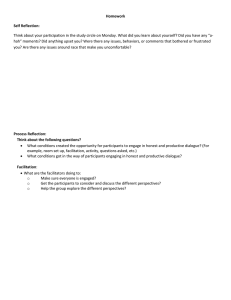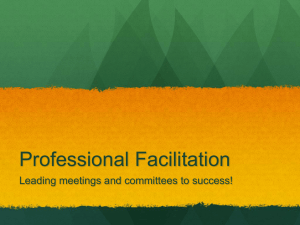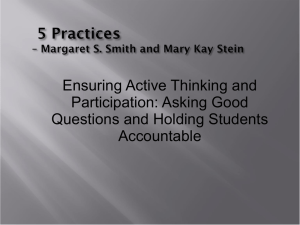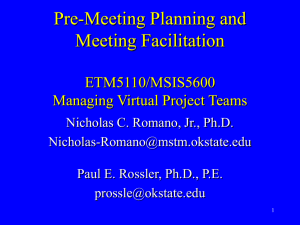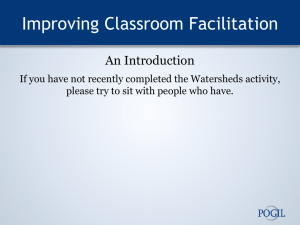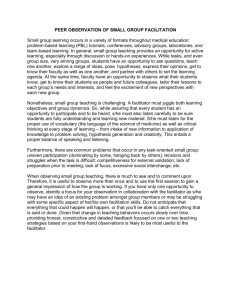Part 2. Higher Order Cognitive Strategies
advertisement
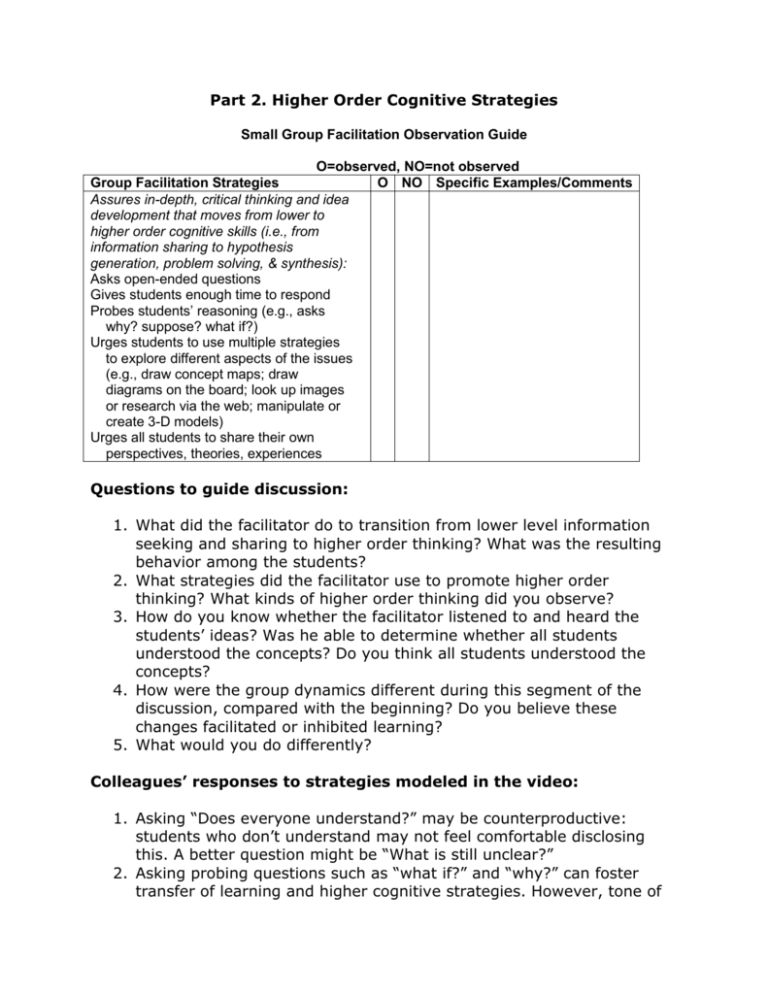
Part 2. Higher Order Cognitive Strategies Small Group Facilitation Observation Guide O=observed, NO=not observed Group Facilitation Strategies O NO Specific Examples/Comments Assures in-depth, critical thinking and idea development that moves from lower to higher order cognitive skills (i.e., from information sharing to hypothesis generation, problem solving, & synthesis): Asks open-ended questions Gives students enough time to respond Probes students’ reasoning (e.g., asks why? suppose? what if?) Urges students to use multiple strategies to explore different aspects of the issues (e.g., draw concept maps; draw diagrams on the board; look up images or research via the web; manipulate or create 3-D models) Urges all students to share their own perspectives, theories, experiences Questions to guide discussion: 1. What did the facilitator do to transition from lower level information seeking and sharing to higher order thinking? What was the resulting behavior among the students? 2. What strategies did the facilitator use to promote higher order thinking? What kinds of higher order thinking did you observe? 3. How do you know whether the facilitator listened to and heard the students’ ideas? Was he able to determine whether all students understood the concepts? Do you think all students understood the concepts? 4. How were the group dynamics different during this segment of the discussion, compared with the beginning? Do you believe these changes facilitated or inhibited learning? 5. What would you do differently? Colleagues’ responses to strategies modeled in the video: 1. Asking “Does everyone understand?” may be counterproductive: students who don’t understand may not feel comfortable disclosing this. A better question might be “What is still unclear?” 2. Asking probing questions such as “what if?” and “why?” can foster transfer of learning and higher cognitive strategies. However, tone of voice is important: consider the difference between “Why would you ask that?” and “Why would you ask that?” 3. Conscious use of metacognitive strategies – e.g., by directly urging students to think more deeply – helps students establish good habits of the mind. 4. Facilitating the use of concept maps may help students structure their discussion and thinking, synthesize information and concepts, see relationships amongst discrete bits of information, and see gaps in their reasoning. However, facilitators may need to teach students how to create concept maps. 5. Intervening to manage quiet or domineering students is important during this phase to be sure that everyone benefits from the discussion.
